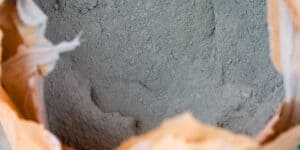This podcast segment is extracted from the opening of a webinar held in June 2019, with Dr Jon Belkowitz of Intelligent Concrete. The webinar was titled Steel Corrosion in Concrete. This segment contains Dr Jon’s summary and the question-and-answer session. Dr Jon talks about using new technology, the fear of being the guinea pig; and how hydrogel technology has been tested in the laboratory and in the field.
Steel Corrosion in Concrete – Part 3

Invisible Strength
Steel Corrosion in Concrete - Part 3
/
RSS Feed
Steel Corrosion in Concrete – Part 3
Dr Jon Belkowitz PhD. PE. – LinkedIn linkedin.com/in/jon-belkowitz-phd-pe-53494719
Intelligent Concrete intelligent-concrete.com
The full webinar https://youtu.be/Je25pnSZBT0
Podcast 1st segment invisible-strength.com/podcast/steel-corrosion-in-concrete
Podcast 2nd segment invisible-strength.com/podcast/steel-corrosion-in-concrete-part-2
Geraldton wharf report referred markhamglobal.com/markham-videos/case-study-geraldton-wharf
View the Transcript
NARRATOR: Hello again everybody, and welcome to this segment of MARKHAM’s Invisible Strength podcast series. This is the third and final segment extracted from a webinar with Dr Jon Belkowitz which was originally held in 2019. In this section, we have Dr Jon’s summary and question-and-answer session. And he talks about using new technology, the fear of being a guinea pig, and how hydrogel technology has been tested in the laboratory and in the field. Without further ado, we’ll take it away!
. . . . .
JON: So I’ve got one more piece of this, and I want to wrap it up with a concise summary. To wrap it up with a concise summary, we’ve got ongoing concrete problems in our industries. I say “industries” in plural, because I don’t know who I’m talking to. I might be talking to dam engineers. I might be talking to contractors who work on bridge decks, or wharfs or jetties. I might be talking to a building maintenance owner, or building maintenance supervisor and owner of a car park. Whatever you’re in, you have a pain that deals with steel corrosion, I don’t care what part of the industry you’re on. Corrosion of reinforcing steel in concrete accounts for one of the greatest problems with concrete deterioration.
The great thing about the colloidal silica hydrogel technology is that we put it through not only laboratory evaluation, but decades – I don’t use that word lightly, decades – of commercial success. Now, it’s important for us to prove the efficacy of this product and validate it in the lab, and we are continuously working on that. I’m working at Intelligent Concrete with the folks at MARKHAM, in our lab and their lab, to prove how this technology works in a standard environment. That being said, the proof in the pudding is the commercial success.
I had one of my favourite mentors, Brian H. Green from the US Army Corps of Engineers. He once said to me: “Jon, if it’s not grey concrete coming down the chute, I don’t care how good your idea is, it ain’t never going to get to the industry.” He’s right. The “LabCrete” is important, and the “BookCrete” is really fun. But if we don’t go from that “BookCrete” to “LabCrete” to the “RealCrete”, then our technology will never make it out to the field. The great thing about what the guys at MARKHAM have been doing for the last 20+ years is they’ve been working diligently to bring this technology out to the contractors, out to failed structures, to prove its efficacy, and it has done that.
So our last part, the thing that we’re doing right now is communication. If you have that feeling in your belly that this seems too good to be true, I get it. I’m an engineer. I’m a material scientist. I spent the last 15 years working on colloidal silica technologies. I thought I knew everything about colloidal silica technology. I’ve written a 274-page dissertation that reads like Mark Twain or Shakespeare, and I’ve studied even more of it after the fact. I’m actually even starting a post-doctorate; I’ve patents on colloidal silica. I love colloidal silica! That being said, what the guys at MARKHAM showed me a year and a half ago blew my mind. I’ve been spending the last year and a half, I’m about to start a post-doctorate on this very subject of colloidal silica hydrogel technologies.
But what we understand about it so far is that it can make your concrete stronger and last longer. The point where we’re at right now is we need to communicate this to chartered engineers, construction managers, the contractors, the owners, the building managers. Because it’s education through exposure and education on the certification process that we’re going through. The pilot projects that we did back in 1996 and 1998 – the experimental features and documentation to give you the warm and fuzzies, that feeling – to get past the rationalisation so you can make a decision as a responsible, qualified individual to make your concrete stronger and last longer.
Now, I want to open up the floor for any questions. I’m going to hear them in a second. But I want to chase all the information that I just gave you with this thought: that all of us are engineers and material scientists; everybody on this phone call has to deal with making concrete stronger and last longer to make those dollars longer.
The real things that we’re doing out in the industry require real solutions. Sometimes it’s hard for us to make that call on new technologies because we’re afraid of the failures that they’ll create. At least we know about these failures. We know what creates the environment for steel corrosion ASR, and we can deal with this because we know what’s going to happen.
Using a new technology, some of the fear is the guinea pig: doing something that nobody has ever done before. The greatest part of working with MARKHAM, I have found, is that they have spent the last 20 years proving this technology out. My wife said a very long time ago that our biggest problem in the concrete industry is that we are solving today’s problems with yesterday’s technology. The way that we move forward is by using innovative technologies to effectively save the world with all the concrete in it. That’s what I believe colloidal silica hydrogel technologies are. Colloidal silica hydrogel technologies (AQURON) are the superhero that’s going to save the world with all the concrete in it. I’d like to thank you for your time and open up the floor for any questions.
DOUG: Thanks, Jon. Brad’s going to run the question section. So over to you, Brad.
BRAD: Hey, everyone. Thanks for joining us today. Hope you enjoyed the presentation by Dr. Jon. Thanks, Jon, for that, really enjoyed it. We’ve had lots of great questions come through. We may not have time to get to all of them today, but we can answer them after the seminar as well. So we’ll just run through the ones we’ve picked out; they’re all very good, but just a couple of ones we should get on with.
The first one is about the application of colloidal silica. The question was around applying it right after the concrete pour or after the cracks appeared? Or can it be done as a remedial measure for a 20-year-old concrete as well? Over to you, Dr Jon.
JON: I actually think this is a question that you guys can answer, too. I would say all of the above, and that’s not for the sales aspect of it. I mean, as soon as we can start applying technology to make that concrete denser, the better. That being said, if we’re working with green concrete – when I say green, I mean concrete that’s like seven days old or three days old: concrete that already has a certain amount of densification to it, that hasn’t gone through damage – yes, you can apply the colloidal silica hydrogel technology.
Just because that concrete is dense and it hasn’t cracked, it’s not going to migrate as much. It doesn’t mean it’s not helping; it’s definitely helping the concrete. But as that concrete starts deteriorating, you can always reapply it. It’s not that it’s coming off. It’s not like a silane or siloxane sealer that it can eventually abrade off. This stuff is actually chemically interacting with the concrete. So the only thing that’s going to happen is that as more cracks will form – due to service life, fatigue life, dynamic loads – you can put another application after some time to make that concrete stronger and last longer. Did I answer that question, Brad?
BRAD: Yeah, excellent. Just to back up what you’re saying, we generally find with older structures, our application rates are a bit heavier, just because of the extra cracking and that sort of thing. We’ll move on to another one. So one of the questions is about different ways you can reduce corrosion. How does non-corrosion steel reinforcing, such as stainless steel or other protective coats, compare to hydrogels?
JON: The hydrogel is going to affect more than just the steel. It’s going to affect the hydrated cement matrix, which has a secondary impact on the steel. So if we already have stainless steel on the budget, or what we use here in the States, we use epoxy-treated steel, that stuff is still not perfect. Especially with epoxy-coated steel, if there’s a little nick in the epoxy, or if there’s a tear in the epoxy, if there’s some that was ripped off, that’ll be a singularity or a point of weakness.
With stainless steel, if the environment is nasty enough, it can still go through those corrosion mechanisms. Maybe not as intense or as rapidly, but still, especially if we have acid attack or something like that. So any way that we can really treat the concrete is great. If we already have the epoxy-coated steel in the structure, you already have it. But that being said, when we look at structures that are 20 years old or 10 years old, they normally don’t have the epoxy-treated or the stainless steel in it, and if they do, it has already gone through some failure mechanism.
So if you want to save some money and you can take out the epoxy-treated steel, that’s great. That’s really something that you have to discuss with your engineer and your owners. But I believe that using colloidal silica hydrogel technologies throughout the entire concrete process – mixing it in, spraying it on, and then continuous applications over 10 to 20 years – you really wouldn’t need, in my opinion, the epoxy-treated or the stainless steel. Brad, did I answer that question?
BRAD: Yeah, good. You’ve got anything to add to that, Doug?
DOUG: No, only that the epoxy-treated and the stainless steel are a lot higher in cost compared to traditional reinforcing steel. I mean, it varies from structure to structure, but it is a lot lower cost to either spray something to the concrete or add it into the concrete mix. So I think that’s good. Do you want to go with this one, Brad?
BRAD: Yeah, that’s a good question. The slides seem to show the hydrogel technology treating open pores, are internal pores also treated?
JON: Yes. But please bear in mind, that’s limited to the amount of migration that we have of the technology. So as the technology migrates deeper into the concrete, it’s going to have a greater effect on those pores within the body of the concrete. Did I answer that, Brad?
DOUG: Yeah, that’s good.
BRAD: The next one: What in-situ testing results are available for the colloidal silica compounds applied as a refurbishment to existing concrete?
JON: Yes. I know that right now, we’re running a battery of tests on some wharves in Sydney. Is that correct, Doug?
DOUG: Yes, and in Western Australia as well.
JON: So we already have some datasets that we’re turning into technical briefs. But more recently, we’re creating newer datasets from the Geraldton Wharf in Western Australia that we’ll have for you, or for everybody on the phone call, within the next couple of weeks.
DOUG: Yes. That’s using the Germann Instruments in onsite tests that show that non-destructively, we can test it onsite and show you the definite results there.
JON: Right. That being said, I like destroying concrete to test it. The only problem is most people don’t like turning their concrete structure into Swiss cheese. So what is it called, the GVT test?
DOUG: Yes, GWT I think it is.
JON: So basically, what we’re doing is we’re putting some type of pressure head on our concrete. The more permeable the concrete, the greater change that we see in that pressure head. We’re measuring that at areas before we put the AQURON technology and after we put the AQURON technology. But please bear in mind, on some samples that we’re creating here in the lab in the States, from New Zealand based materials, as well as what’s going on in New Zealand, we are doing laboratory data that looks at permeability in the lab, as well as the stuff that we’re doing in the field, so we can have some concurrent datasets going on.
BRAD: That’s great, thanks for that. We’ve probably just got time for one more, this one’s a good one too. Once formed, how does colloidal silica hydrogel react to or handle movement or cracking from temperature or dynamic loading?
JON: So I believe that the future of concrete technology is in colloidal silica hydrogels. That being said, they aren’t the silver bullet for every werewolf out there. Now, part of the gel will still have that resiliency to movement. But as the gel starts going into that hardening phase, once it becomes like the parent material: Calcium Silicate Hydrate, it still is like Calcium Silicate Hydrate, where it’s still a brittle material or more brittle than steel. So if there’s any dynamic loading that would cause failure to the parent material, that same dynamic loading would cause failure to the new field material. Does that make sense?
BRAD: Yes, that’s good. Well, we better wrap it up now. There’s obviously a lot more questions, but that’s about all we’ve got time for now. Back over to you, Doug.
DOUG: Yes, I’d just like to thank everyone for coming onboard this webinar. There will be a recording available after this, and we’ll send out a quick feedback survey if you can fill that in, and then we’ll get that out to you. Dr. Jon is available on LinkedIn, so you can contact him directly if you like. Everyone that has asked questions that we haven’t got to, we’ll get an answer to you in the next two or three days. Other than that, I’d just like to thank you again. Thank you very much, Dr. Jon, for presenting to us, the webinar!
JON: No problem. Y’all have a great day! Thank you very much.
. . . . .
NARRATOR: And that’s it folks – that’s a wrap! You’ll find the links to the earlier segments, and also to the complete webinar, in the notes at the bottom of the transcript. And we invite you to browse around the library, and check out the whole series. Thank you, and have a great day!
Want to Contribute?
Feedback on our podcasts? Suggestions for future topics? Looking for more information on topics we’ve discussed? Send us a message – we’ll be in touch within a day or two.
More about MARKHAM
MARKHAM are dedicated to providing innovations for concrete and construction. Focusing on concrete waterproofing solutions, penetrating concrete sealers and durability treatments for concrete.
Podcast Categories
Menu
Latest Episodes

The Electric Vehicle of Cement Making
We’ve talked about this in other places, but cement manufacturing is a real problem child

Eco Choice – People and Planet Focus
Environmental Choice New Zealand has had a makeover – now it’s called Eco Choice Aotearoa.

Starting Good Conversations
Have you seen those colourful Trademutt shirts on site? They’re a conversation starter! This is
invisible strength podcast
The whole MARKHAM team is pleased to present you with our podcast series, INVISIBLE STRENGTH. In this series of interviews, we’ll walk through the science and challenges of concrete durability, what goes wrong in the field – and the advanced methods available to restore and enhance service life to concrete construction.
INVISIBLE STRENGTH reflects a number of factors in concrete construction and durability. When things go wrong, the evidence can become very visible indeed. However, when all is going well, there’s nothing particular to be seen!
MARKHAM’s concrete treatments, too, are invisible once completed – and the result is the long internal, invisible durability of the concrete.
So join us as we explore the unseen world inside concrete – why it matters, and how it can be protected!
Stay Connected
Listen and subscribe to us on your favourite podcast platform, we're always adding new episodes!
Newsletter
Sign up for email updates on the latest collections, campaigns and videos.


